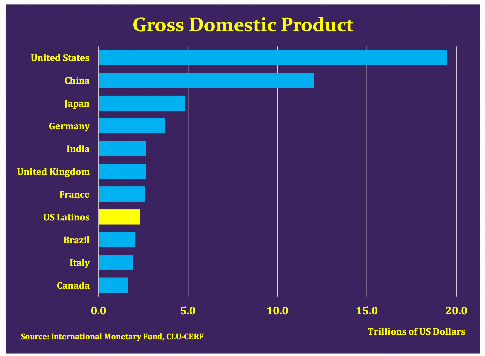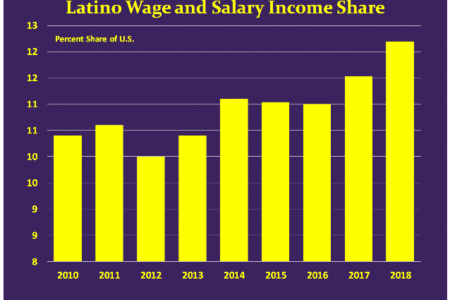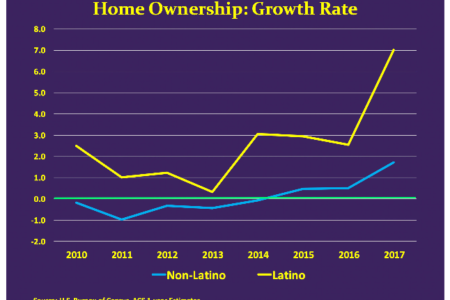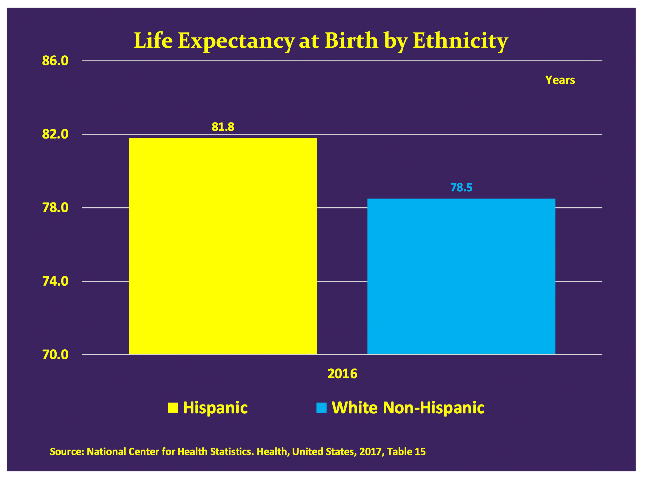
Share On Social!
 U.S. Latinos would have a larger economy than Brazil if they were its own country.
U.S. Latinos would have a larger economy than Brazil if they were its own country.
In fact, they would have the eighth-largest economy in the world, according to the Latino Donor Collective (LDC) U.S. Latino GDP 2019 report. LDC partnered with American economic and demographic experts to collect this data.
The report aims to factually illustrate Latinos’ role as a powerhouse in contributing to the American economy, according to Matthew Fienup, executive director of the Center for Economic Research and Forecasting at California Lutheran University and one of the authors of the report.
“Given robust population growth, high labor force participation, rising incomes, and strong increases in educational attainment, we expect the significant growth premium enjoyed by U.S. Latinos to be maintained in the years ahead,” Fienup told Barron’s.
Latino GDP growth
The report notes that Latino GDP is remarkable not just for its size, but its growth.

Among the ten largest GDPs in the world, the Latino GDP is the third fastest growing and the single fastest-growing of the fully developed economies.
Specifically, the Latino GDP is the fastest-growing of all developed countries and
Moreover, its estimates show significantly rising Latino shares of GDP and personal consumption. the Latino GDP:
- shares have increased to 11.8%, compared with 11.4% for 2010
- personal consumption shares are 11.6%, a considerable growth from 10.6% in 2010
- is projected to account for 24.4% of total U.S. GDP growth by 2020
Latino net new business formation increases from 300K to 600K during this time and Latino owned firms grew by 22% in 2014-2016.
Strength of Latino GDP
WorkForce
U.S. Latino labor force participation (LFP) is 67.4%, fully 5 percentage points higher than non-Latino. Despite being only 18% of the U.S. population. Latinos are responsible for 82% of the growth of the U.S. labor force since the Financial Crisis and Latino GDP is growing 28% faster than the broader American economy.

Consumption
Of consumption rates in the U.S., the Latino community’s numbers grew at a 72% higher rate than their racial peers. The 2017 Latino personal consumption share increased from 10.6 % in 2010 to 11.6% in 2017.
Latino personal consumption grew mainly because the number of Latino consumers rose with strength during this time.
The amount spent by individuals consumers also grew.
Latinos added new homeowners each year from 2010 to 2017. Beginning in 2013, Latino growth of homeownership accelerated rapidly and grew by 7% in 2017.
Education and Life Expectancy
Life expectancy is one of the key indicators of a population’s health.
The average life expectancy for Latinos was more than three years longer than White non-Latinos in 2016. At birth, Latinos can expect to live an average of 81.8 years compared to 78.5 years for non-Latino Whites.

The growing Latino population is younger, it suffers less from major chronic diseases, has healthier habits and enjoys a longer life expectancy than the non-Latino population.
“From 2010 to 2017, the number of educated Latinos rose by 51%, while the number of non-Latinos grew by 21%,” writes with Latino Biz Today. “Many of these new employees into the marketplace are native English and Spanish speakers, with educations at all levels.”
Given U.S. Latinos’ strong labor force participation and extraordinary growth in educational attainment, it should not come as a surprise that Latinos will power the U.S. economy to a better future.
Explore More:
Health EquityBy The Numbers
1
out of 10
Pedestrians survive when hit by a car at 40 MPH



